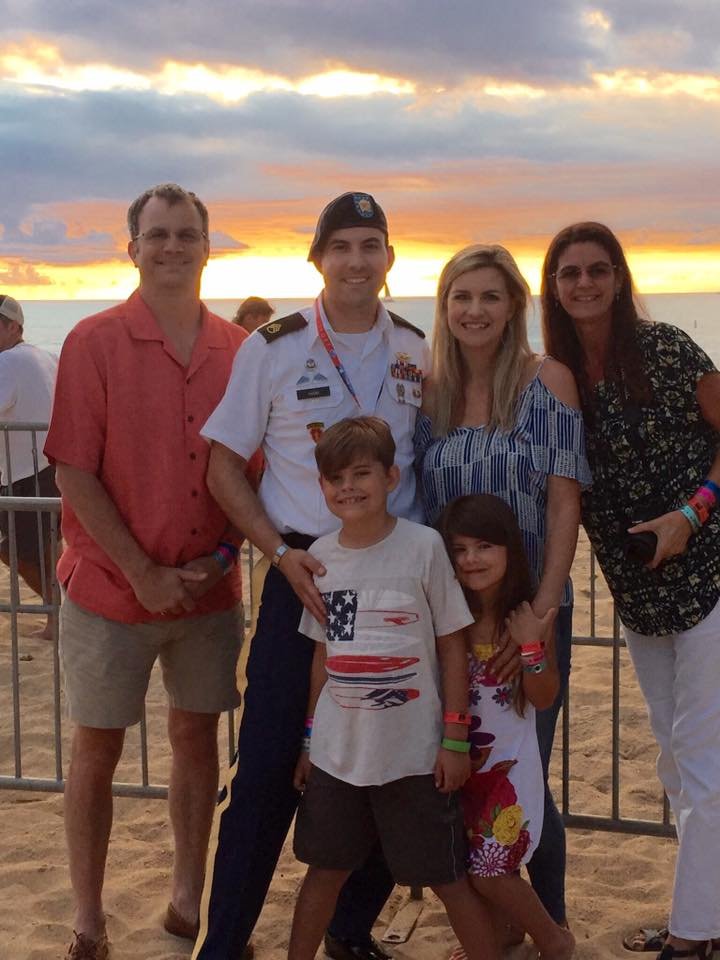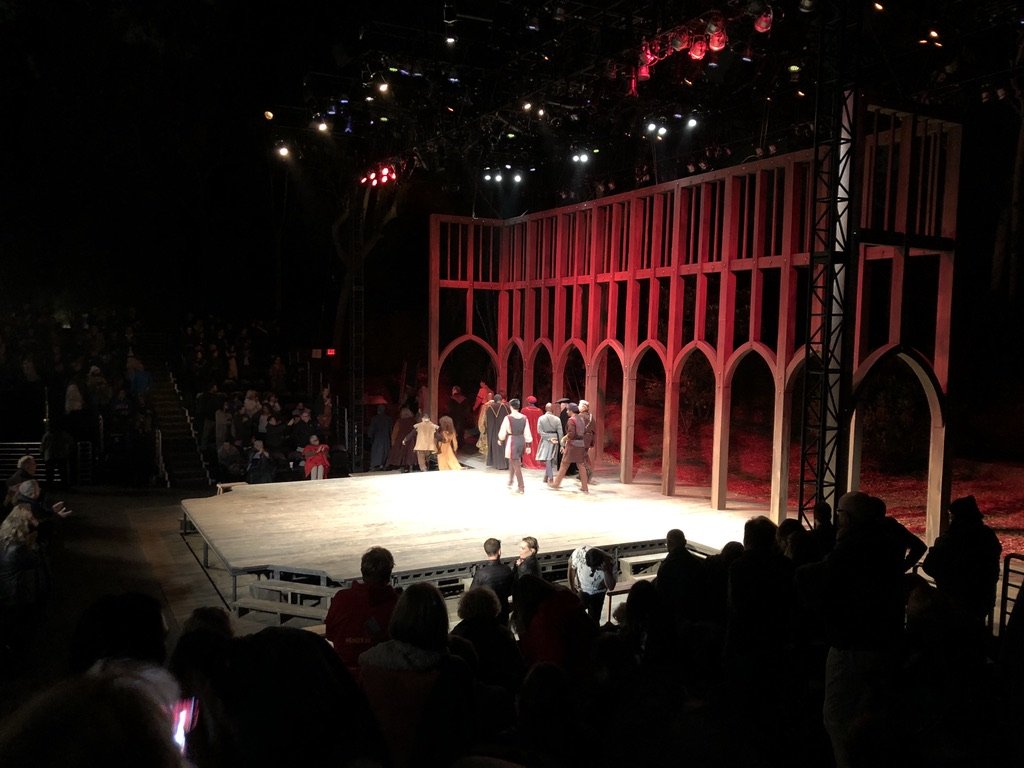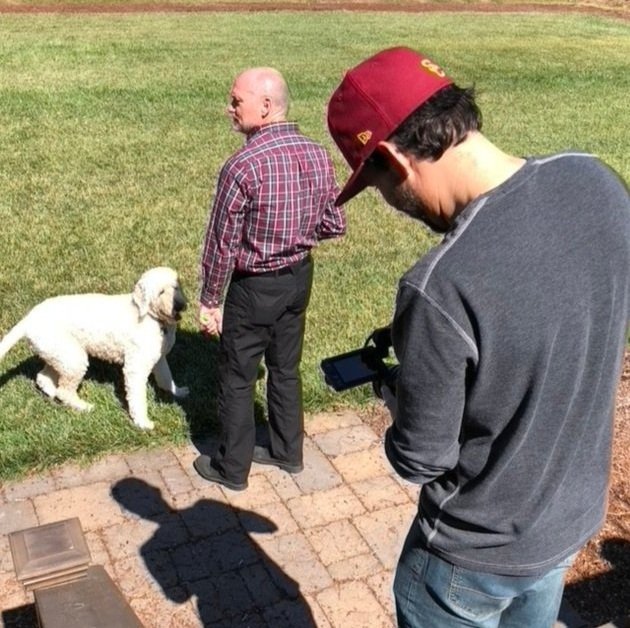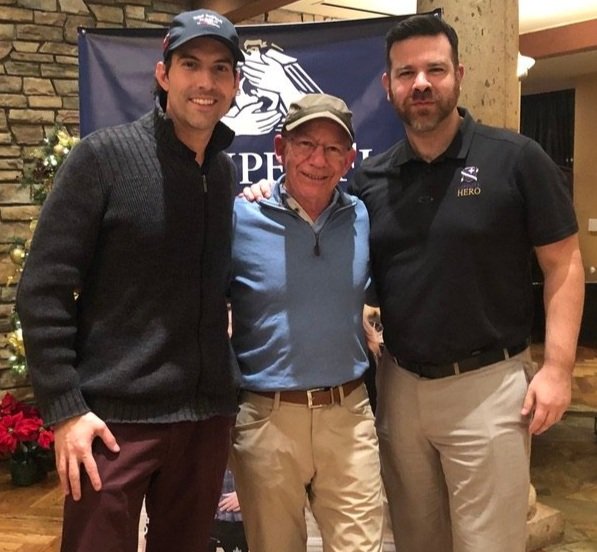A Long and Misunderstood Legacy
When you hear the term “The V.A.” or “Veteran’s Hospital” there are a lot of thoughts that come to mind especially for Veterans. I’ve heard everything from, “let’s burn it down and rebuild,” to “it’s an abusive system that is hurting Veterans, let’s go private,” to “it’s some of the best healthcare in the world and Veterans love it!" So what’s the truth?! As with anything the truth is usually somewhere in the middle. I’ve now spent several years on both sides of the V.A. working as a sub-contractor directing almost 100 videos for them, traveling to some of the top-rated V.A. hospitals in the country and have met some amazing doctors, nurses, and personnel (roughly about 1/3 of whom are Veterans themselves) who work tirelessly to give Veterans good healthcare. I’ve also explored a much darker side of Veteran healthcare with my films highlighting stories of scandal, cover-ups, betrayal and abuse, some truly egregious stories. Diving into the darkness isn’t always good for my mental health and I’ve had some major struggles, I’ve also leaned on V.A. therapy and medication as a few tools to help me through some hard times. In these next two blog posts I will explore all sides of the V.A. and attempt to help us make sense of this complex but necessary system that Abraham Lincoln once promised as a way “To care for him (her) who shall have borne the battle, and for his widow, and his orphan.”
My team and I interviewing Tom Hanks for one of our videos.
Me and Mike Dowling in the historic Wadsworth Chapel at the West L.A. V.A.
Me with former acting Secretary for Health, Dr. Richard Stone.
Me with two quadriplegic Veterans getting great care at the Long Beach V.A.
Me filming the many military unit insignia at the West L.A. V.A.
The V.A. Largest Integrated Healthcare System
The Veteran’s Health Administration is the largest integrated healthcare system not only in the United States but in the world. The V.A. (as it is commonly referred to) has helped save the lives of hundreds of thousands if not millions of veterans since it’s inception but also has been the excoriated by Veterans throughout it’s history for corruption, scandals, poor healthcare, unequal access and a host of other issues. Last year I directed 75 videos for the 75th anniversary of the V.A. (I will explore these in greater detail in my Part 2 post), two of which are below as the V.A. makes their argument for the quality of their healthcare.
The V.A. Through Hollywood’s Lens
Before I had joined the military the only perspective of the V.A. was through the lens of Oliver Stone’s portrayal of hero Veteran Ron Kovic’s harrowing story Born On The Fourth Of July (a movie I still love, and am now friends with Mr. Kovic). If you’re unfamiliar with the story, Ron is an idealistic young man in the 60’s that joins the Marines to “stop Communism over there before it spreads here.” While Ron is on his second deployment he is involved in a heavy firefight where he accidentally shoots a fellow Marine (thinking he was an enemy) and then is shot by enemy fire and paralyzed. Ron returns home to a divided country, he’s bitter, angry and then is mistreated with deep neglect at the Brooklyn V.A. The portrayal of his return home (now having my own experience returning home from war) resonates deeply. The only understanding I had of the V.A. back then was that it was negligent, abusive, corrupt and perhaps even a negative force against Veterans, but now I know this is a limited perspective. As I discuss the V.A. with non-veterans I too realize they have a very uneducated perspective about what’s going on which is perpetuated by modern day films like Thank You For Your Service (a film I was not personally a fan of). The truth, as usual, is far more complex.
First Experience With the V.A.
My first experience with the V.A. was introduced to me by a personal hero of mine Allen Hoe, a Vietnam combat Veteran with a harrowing story, in 2013 as I was leaving active duty. Allen lost his son Nainoa Hoe in Iraq and continues to advocate for Veterans and sharing Nainoa’s story (I made two short documentaries about them while I was on active duty in Hawaii, see below). Allen helped me as I was transitioning out of the military to submit all of my claims and how to do it, he really helped me navigate the system I was completely ignorant of (Thanks Allen!). Once my family moved back to California and I started going to USC film school I was still in the Army Reserve so I had military healthcare. It wasn’t until I was completely out of the Army that I had to look deeply at what the V.A. offered. Check out my Emmy nominated film The Pacific Soldier narrated by actor Max Martini and featuring Allen and his son Nainoa’s story, I go a bit deeper in my other film Legacy: Flag, Father and Son.
Family photo while we were in Hawaii debuting my film The Pacific Soldier on the beach of Waikiki, 2016.
First Film about the V.A. - The Ranger
My next V.A. experience was through the eyes of a quadriplegic Veteran, Chris Bemiss. Chris and I spent a lot of time together while I was doing a film about him called The Ranger (watch below), with the All Warrior Network. As Chris tells his story he gets to a very dark part about some serious neglect and even abuse at the Hines V.A. in Chicago. Chris and I even did some recreations in the film that felt very real to Chris’ experience. Around the time we were making this film there was a massive scandal about long wait times and cover-ups that was first discovered at the Phoenix V.A. and it was then revealed to be a much larger problem. There are a lot of Veterans out there that have had abuses at the hands of people within the V.A. system and it’s important for us to listen, validate and then hold bad-actors accountable.
Filming on a stage in San Diego recreating a V.A. hospital, 2015.
The Ranger was the number one documentary on Hulu for about a week and is also still available on Amazon Prime.
Filming our interview with Chris on a hot day in the San Fernando Valley, 2015.
Chris opens up about his story, 2015.
Chris and I got really close during the filming and I learned a lot about grit, overcoming failures and perseverance, 2016.
Tom Hanks, Shakespeare and the West Los Angeles V.A.
My next film involving the V.A. was pretty special because we got to interview and include Tom Hanks! The quick story behind this film —> my buddy, producer and fellow Veteran Mike Dowling has been deeply involved at West L.A. V.A. for both advocacy purposes and his healthcare, he knew Ben Donenberg who runs the Shakespeare Center of Los Angeles. Ben is not a veteran but has a huge heart for helping veterans especially those in the arts. Ben and the Shakespeare Center worked out a deal with the West L.A. V.A. to allow their stage to be crafted on the property, primarily built by Veterans and they would act out Henry IV to several nights of full audiences starring Tom Hanks and many other great actors. Mike and I made a great little video telling the whole story, which got 368,000 views on facebook (watch on Youtube below). This whole project was a gem of an experience in an otherwise sour perspective I had with the V.A. The sad irony of course was the V.A. reneged on their contract with the Shakespeare Center for more shows in the future, which felt like a huge blow to the hard work these and future Veterans would do for the arts on the campus.
Tom hanging and talking with the Veterans, 2018.
Interviewing Ben Donenberg for our video, 2018.
Mike and I with Tom Hanks, 2018.
The Veteran crew watching our video on the only screen we had available, 2018.
The stage is set, the lights are on and the actors give a great show! - 2018
Down The Dark Rabbit Hole - The Story of Colonel Scott Russi
My next journey into understanding the V.A. turned very dark. In 2018 I was doing some research on another potential project and I reached out to an old veteran friend, Lt. Col. Ben Kam who was a combat surgeon I served with in Afghanistan (he can be seen in my 2009 Emmy nominated military film about an Afghanistan Combat Hospital called Shamrock Black). Ben gave me a rather startling update about another combat surgeon, Col. Scott Russi (also part of my Shamrock Black documentary). Ben told me that Dr. Russi had retired from the military and started working at the Roseburg V.A. in Oregon (rated amongst the worst in the V.A. system) but had since been wrongfully fired and was in a major lawsuit with the V.A. I reached out to Scott and realized this was one of the most egregious firings and toxic leadership environments I’d ever heard of. I immediately went up to Oregon to investigate, hear more about the story and interview Scott and his co-workers. If you want to see the whole story please watch my 2018 Emmy nominated film Stop The Line: The Dr. Russi Story; Mike Dowling and my late-wife Melanie were also producers on this.
The long and short of it is there was a corrupt and toxic leader who Scott started to suspect was a charlatan of a doctor and was proven to have performed over a thousand wrongful colonoscopies in another VA system and instead of being fired was moved to Roseburg, another failing V.A. hospital. This leader, his name is “Dr.” Ranjan, manipulated Scott’s record and was able to fire him. Scott lost his practice, his credentials and his access to helping Veterans, the impact was so stressful on his family his 16-year-old daughter attempted suicide (thankfully she survived and is doing much better now). This story deeply affected me, my family and my mental health and I grew very bitter at the whole V.A. institution. I finished the film in late October 2018 and we even did a change.org campaign which unfortunately only garnered about 4,900 signatures. Our campaign was covered in the Oregon News Review. Sadly nothing really changed for Scott at the V.A. but we were at least able to get his story out there.
Scott, myself and Veteran Myron Miller who plays the local Roseburg Santa Claus every Christmas, 2018.
Myself, Scott and his dog playing on a beautiful Oregon day, 2018.
V.A. employees Gary and Susie sharing their story of abuse within the Roseburg V.A, 2018.
Mike Dowling, myself and Former Oregon Congressman Peter DeFazio, who was a great advocate for Scott, 2019.
Me filming without permission at the Roseburg V.A. thinking I’m a spy or something, 2018.
1887 - The Legacy of Soldiers’ Homes
The final video I’ll be talking about in this post is a very important piece of work “1887 - Restoring The Soldiers’ Home Of Los Angeles”. After the Civil War Abraham Lincoln designated “Soldier’s Homes” throughout the country as a place where returning Veterans could not only get healthcare but also get spiritual help, camaraderie, food, clothing and a place to call home. The goal of the Soldiers’ Homes were to be where Veterans could heal from the wounds of war and then reintegrate back into society when and how they wanted. Our film shares the story of how over 1,000 acres of land was deeded to Veterans in 1887 and was the largest Soldiers’ Home on the West Coast, sadly over time it has dwindled down to 388 acres and is primarily a hospital now. Once the Veterans Administration became a federal bureaucracy in the 1920’s these “Soldiers’ Homes” transitioned from being more of Veteran villages to just hospitals and in my humble opinion this is why we’ve had so many issues with the V.A. Veterans need a lot more than only healthcare when we return home; we need connection, community and a wholistic approach to healing. It feels darkly ironic that the only two original Soldiers’ Homes on the West Coast (as you’ll see in my film below) are the Roseburg, Oregon V.A. and the West Los Angeles, California V.A. and those are two of the lowest rated systems with some really bad scandals over the years.
My crew filming the Trolley Station at the West L.A. V.A. that used to take Veterans from downtown to the beach for a quarter, 2018.
Dr. Jon Sherin, 1887 board member, sharing his thoughts on the renovation project, 2018.
Filming the Governor’s mansion on the south side of the West L.A. V.A. campus, 2018.
Me directing our team on the West L.A. property for our 1887 film, 2018.
Interviewing Army Veteran Jim Zenner, currently the Director for Military and Veterans Affairs for the County of Los Angeles, 2018.
There Is Hope - The Present and Future of the V.A.
I will have a Part 2 blog post about my work directing almost 100 videos for the the V.A. which has given me a much larger and hopeful perspective focusing on all the amazing technology, people (doctors, nurses, executives, administrators), innovations, programs, and facilities that are saving Veteran’s lives every day and should be celebrated. The V.A. system is here to stay whether we like it or not. Many Veterans including myself love the camaraderie we have when we go there, we love how they cater to our specific needs and many Veterans I’ve talked to actually love the care they get. On the flip side we must hold the system and it’s people accountable when there are wrongdoings. My next post will hopefully help us see the light at the end of the tunnel so that we can better fulfill Lincoln’s vision to “take care of those who’ve borne the battle.” Thanks for reading and watching!
A great group of Veteran advocates at the West L.A. Soldiers’ Home, 2019.
Filming the Wadsworth Chapel built in 1900, has been left with complete neglect, 2018.
Visions of what the Soldiers’ Home in Oregon once was, 2018.
A look at the inside of the Wadsworth Chapel, 2018.
What the Wadsworth Chapel would look like once restored.


































